Are you constantly scraping the back-end of your trailer exiting the gas station?
Do you want to do some back country camping but are concerned about losing your trailer undercarriage on the rough roads?
It might be time you considered “flipping” your trailer axles, a relatively easy method to change the way your trailer sits and to increase ground clearance.
Trailers are almost always designed and built with the axles “underslung,” where the springs are positioned under the axles.
This setup gives the trailer a low center of gravity, improves the trailer’s stability on the road, and helps prevent trailer sway.
Underslung trailers – being lower to the ground – also have a better aerodynamic profile when traveling which helps reduce drag and improve fuel economy.
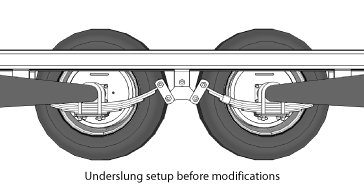
Flipping the trailers axles so that they sit below the springs – an “overslung” configuration – will increase the trailer body height above the road by up to 6” and should give you plenty of clearance to take on back-country roads or the most ill-placed gas station curb.
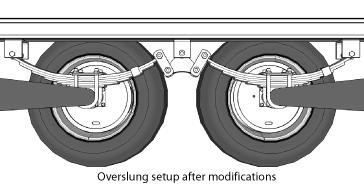
Flipping the axle from underslung to overslung will raise the trailer’s center of gravity, potentially making it more sensitive to cross winds.
If your trailer travels securely on the road at all times, flipping the axles will not be a cause for concern.
But if your trailer is sensitive to sway or has stability issues even on a good day, flipping the axles may not be such a good idea until the root cause of the poor ride has been fixed.
Before You Flip Your Axles, Consider This
The axles on your trailer come with a pre-existing camber (a vertical upward kink/bend in the axle center).
This camber allows the axle to flex with the weight of the trailer, and run with the tires square and true to the road.
Without camber, the weight of the trailer would force the tires to run unevenly on the road, causing premature tire wear, poor trailer tracking and damage to the running gear.
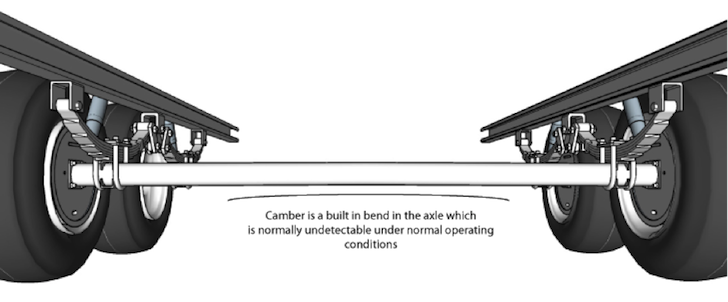
When “flipping the axle,” the axle is kept in the exact same position and the components attached to the axle are raised above it.
Lifting the trailer may require an additional foot plate to be fitted to your access steps once the modifications are complete, and if your leveling jacks do not have enough travel for the increased trailer height, you will need to fit new and longer jacks or carry hardwood chocks to compensate.
Parts will need to be ordered before embarking on the “flip”.
Check your axle diameter and get an “over/under conversion kit” from your local or online parts supplier.
The kit should include new spring perches, spring plates, and U bolts.
If your trailer has a few miles under its belt, this is probably a good time to order and fit new spring bushings and bolts, and replace the spring equalizer, shackle plates and bolts while you are at it.
A local equipment rental center will usually have suitably rated jack stands and trolley jacks to help keep your trailer off the ground and in a safe, stable, and secure working position.


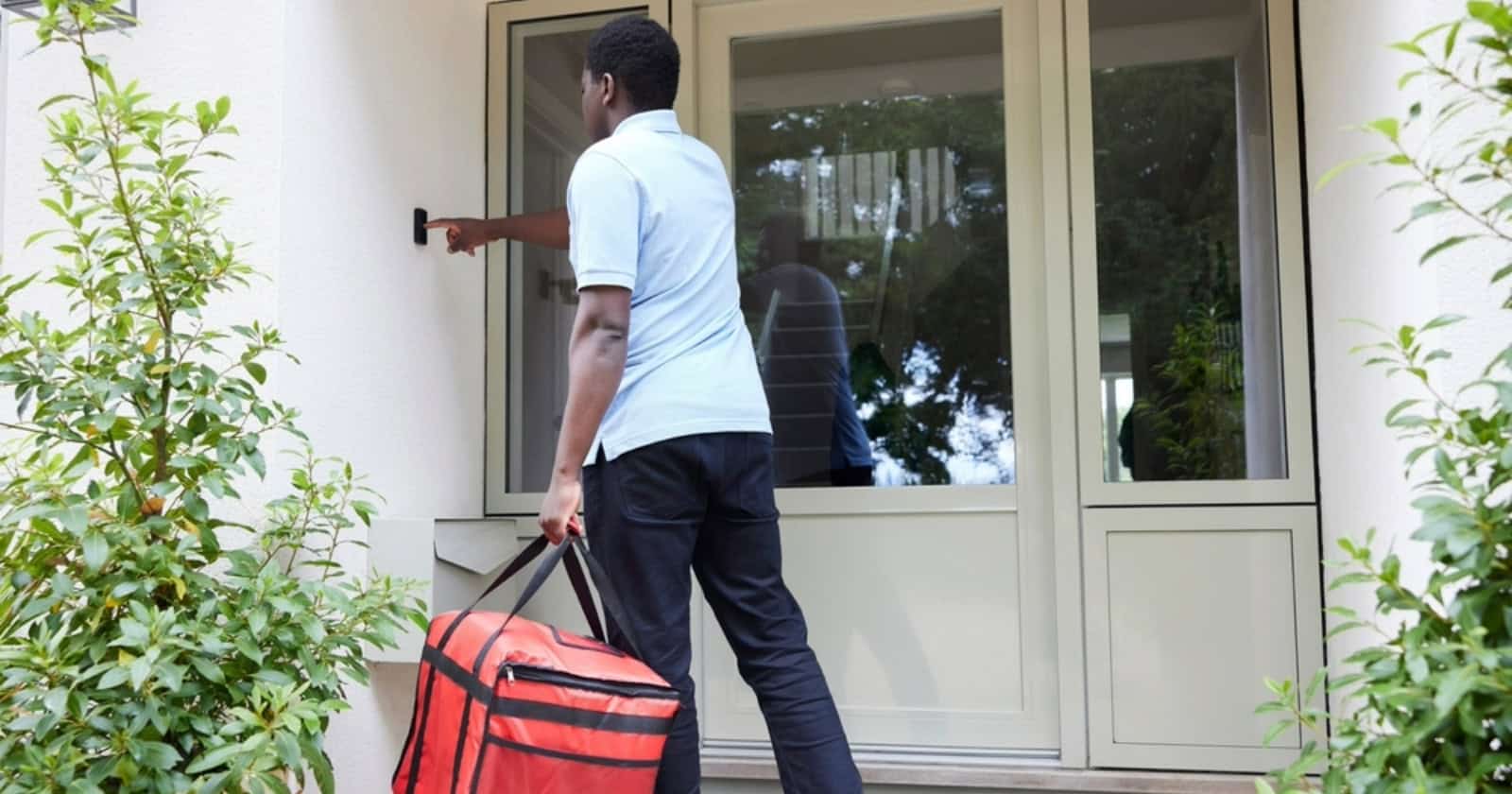
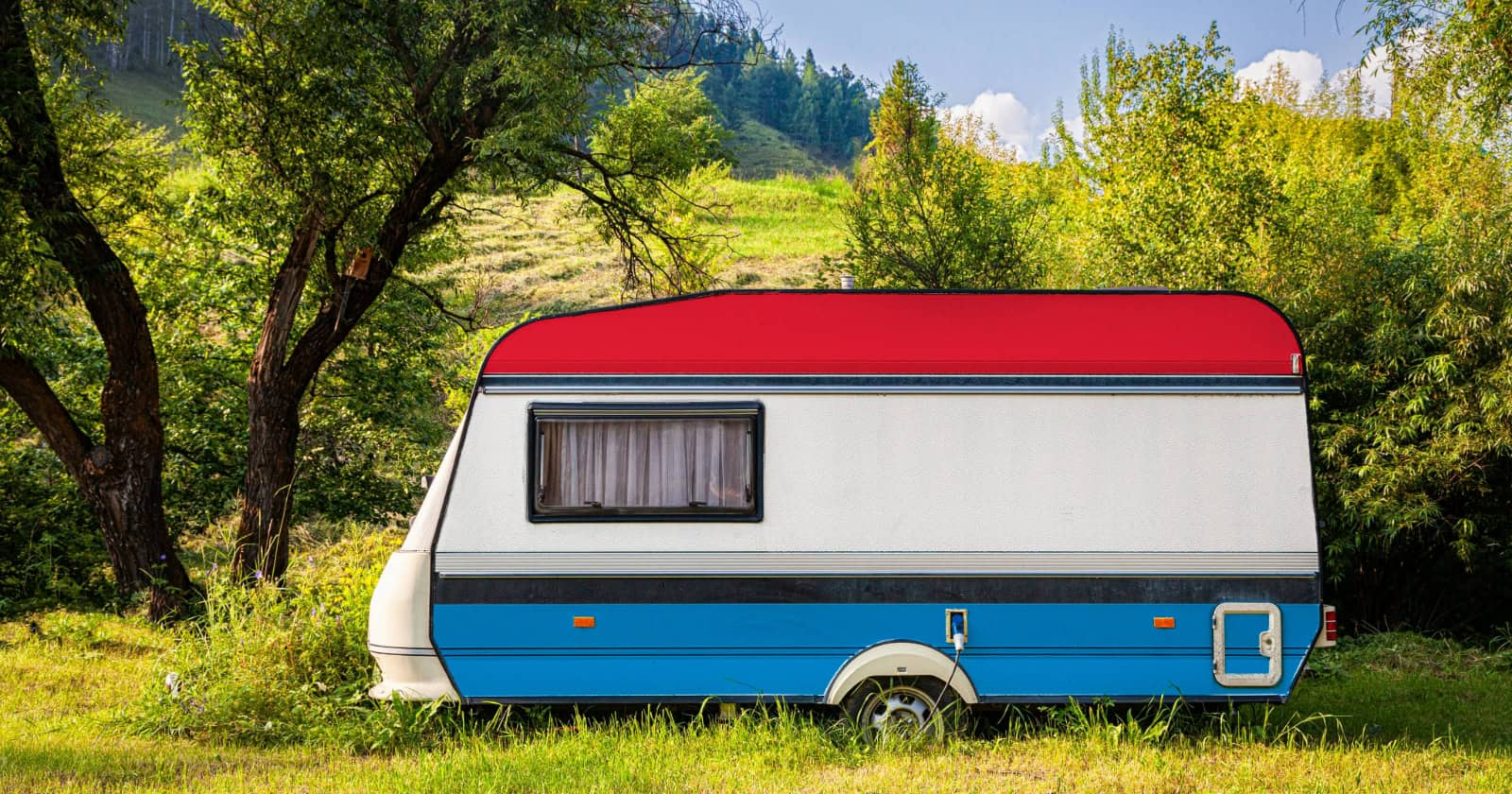
Hi and thanks for the article. I recently had my axles flipped by a local RV dealer. In most articles I noticed that they include welding the spring seats to the axle. Like your article the dealer did not weld the seats either. What are your thoughts on this. I’m concerned that the axles might rotate over the course of years to where the camber is not bowed up as it should.
Can you get more ground clearance on a trailer that doesn’t have springs? Thanks
Glad you found it helpful Rich, thanks for your comment.
Bryce,
Very nicely done, great instructions. Thank you for publishing this.